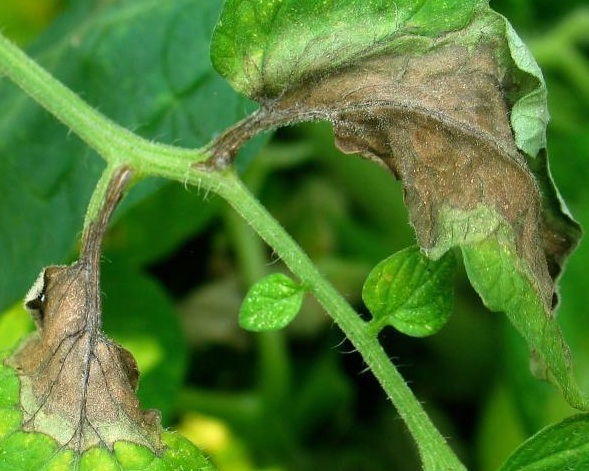
 July 6, 2009, Ithaca, NY – Late blight is killing tomato and potato plants on commercial farms in the eastern United States.
July 6, 2009, Ithaca, NY – Late blight is killing tomato and potato plants on commercial farms in the eastern United States.
July 6, 2009, Ithaca, NY – Late blight is killing tomato and potato plants on commercial farms in the eastern United States.
 |
|
In addition, basil downy mildew is affecting plants in the Northeast.
“Late blight has never occurred this early and this widespread in the U.S,” said Meg McGrath, associate professor of plant pathology and plant-microbe biology with Cornell University.
One of the most visible early symptoms of the disease is brown spots (lesions) on stems. They begin small and firm, then quickly enlarge, with white fungal growth developing under moist conditions that leads to a soft rot collapsing the stem.
Classic symptoms are large (at least nickel-sized) olive-green to brown spots on leaves with slightly fuzzy white fungal growth on the underside when conditions have been humid (early morning or after rain). Sometimes the border of the spot is yellow or has a water-soaked appearance. Spots begin tiny, irregularly shaped and brown. Firm, brown spots develop on tomato fruit.
McGrath stresses the need to act quickly to protect tomato and potato plants and to make sure that plants don’t become a source of spores that could infect other commercial farms, as late blight spores are easily dispersed by wind.
Petunias, which are closely related to tomatoes and potatoes, can also be infected by late blight and show similar symptoms.
One source of late blight in New York has been traced to tomato plants imported to garden centres from production facilities in the south. If tomatoes were started from seed by a farmer in the Northeast, plants are unlikely to be infected, at least initially, she said.
Print this page